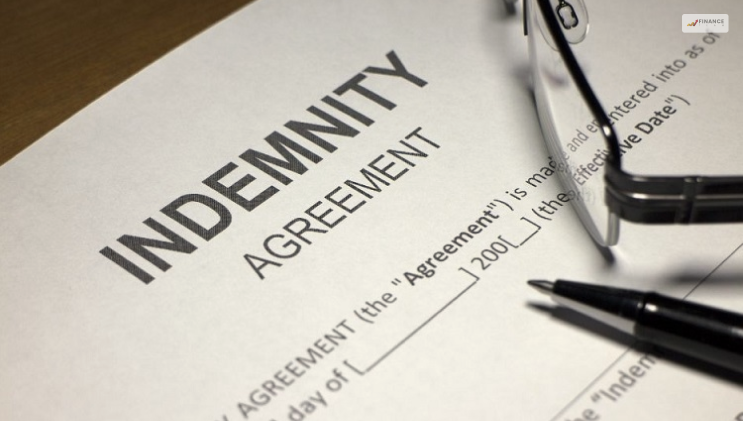Indemnity Agreement: Purpose and Key Terms (Step-by-Step Guide)

Does the fear of negligence by another company constantly threaten you? If the answer is yes, an indemnity agreement might be the best solution. This form of insurance claimF generally protects you from getting sued by your customers and associated because of your contractors’ negligence.
The agreement might stipulate the important provisions that safeguard your rights. Although indemnity agreements are a bit complex, you must keep yourself well-acquainted with their purpose.
Don’t worry! I have explained everything about the indemnity insurance agreement in detail. All you have to do is go through this article till the end.
Defining Indemnity Agreement

Also popular as the hold harmless agreement or no-fault agreement, the indemnity agreement actually has some significance in the financial world. It protects the indemnified party against damages or loss related to a third-party business setting. In such an insurance claim contract, there are usually two parties involved- the indemnifier and the indemnitee.
While the indemnitee is one who seeks protection, the indemnifier is someone who promises to take responsibility for the harm. Third-party actions that might be included in an indemnity agreement are:
- Claims
- Coverage
- Lawsuits
When an individual indemnifies you, it indicates that they are not going to sue you for the actions of a third party. But these protections generally do not prevent you from compensation claims after you have breached a contract. The indemnity agreement usually benefits not the indemnifier but the indemnified party.
Read More: What Is Double Indemnity In Insurance? – Meaning & Needs
Indemnity History: A Brief Look
Indemnity agreements have stayed for long, although it was anonymous. Historically, these agreements have the purpose of ensuring cooperation between entities, governments, and individuals. It covers pretty much the same thing as a life insurance claim or health insurance. Haiti had to pay France an independence debt in 1825 to cover French plantation owners’ loss.
Ever since then, this indemnity form has been incredibly used as it legally binds two parties together. However, you might find indemnity as reparation for a country after they have lost a war. Based on the extent and amount of due indemnity, it might take a lot of years to pay them off.
A classic example of indemnity is what the Germans paid after their participation in World War 1. These reimbursements were completely paid almost after a century, i.e. in 2010.
The Functions Of Indemnity
Across every insurance claim agreement, one thing that remains common is the standard indemnity clause. It consists of what needs to be covered and to which extent based on the specific agreement. All the attributes in a period of indemnity are covered under the indemnity agreement.
A lot of contracts might also have an indemnity letter stating that both parties have to meet the stipulations made in the contract. It is very common in an agreement between a business and its consumer. However, it is also applicable on a larger relationship scale between the government and the business or between two countries’ governments.
At times, a business, an entity, or a government has to take charge of larger claims on behalf of the community, like a disease outbreak. Moreover, an indemnity agreement must be considered while you are contracting with some other parties, which might be a risky endeavour.
Considerations That Must Be Made During An Indemnity Agreement

Deciding when to sign indemnity agreements when there is a great possibility of risky transactions is a significant consideration. But is that all? Check out what things you must be aware of when opting for an indemnity:
1. Ways To Pay It
An indemnity can be paid as cash or in ways of replacement and even repair – it all depends on the agreement terms. For instance, if there is a home insurance claim, the homeowner has to pay the insurance company’s premiums. This is in lieu of the assurance that he will be indemnified once the house gets free from fire or natural disaster damages.
If the house is extensively damaged, the insurance firm is obligated to reinstate the property to its actual state. The indemnifier has to pay repairs either by an authorized contractor or homeowner’s reimbursement for financing the repairs.
2. Indemnity Insurance
Next on the list of considerations, we have indemnity insurance, which is designed for a firm to receive protection from an indemnity claim. Such insurance safeguards the holder from the need to pay the entire indemnity sum, even when the holder is liable for the indemnity cause.
A lot of industries necessitate indemnity insurance because they deal with lawsuits every now and then. Each day, instances like malpractice insurance take place, which is shared coverage for medical field practitioners. This safeguards companies and their workforce against any claim made by the client, although certain companies might opt for deferred compensation.
3. Indemnity Acts
The act of indemnity is to protect a person who has acted illicitly while being charged for penalties. While they can opt for insurance claims, indemnity is the best solution for them. Such exemption generally applies to government officials or police officers- who might sometimes be compelled to commit an illegal action for their responsibility.
Such protection is usually granted to individuals who have performed an illicit act for some good of the community, like assassinating a terrorist leader or some popular dictator.
Read More: Underwriting: Why You Need It And How The Various Types Work?
Wrap Up
If you have an insurance claim under your name, there is absolutely nothing to worry about. With the indemnity agreement, you can take necessary actions against the other party without being involved in serious lawsuits. When used in legal sense, the term “indemnity” refers to some form of exemption for damage from liability.
So, that was all about it. I hope this article walked you through the necessary steps of an indemnity agreement. Do not forget to share your thoughts on this – so comment below. Until then, consider the aforementioned tips and be careful of getting indemnified!
Read Also:










